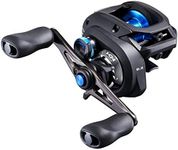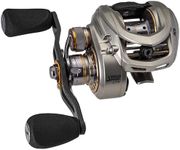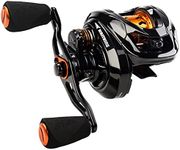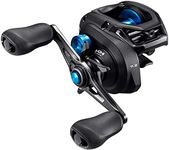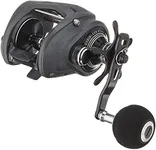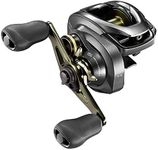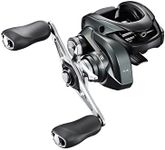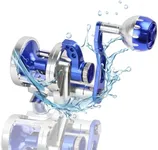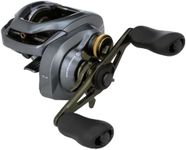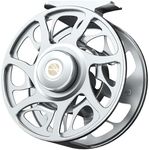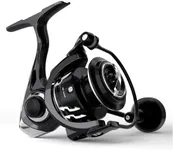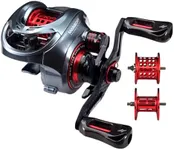Buying Guide for the Best Baitcaster Reels
When choosing a baitcaster reel, it's important to understand your own fishing needs, such as the species you’re targeting, your experience level, and your preferred fishing environment. Baitcaster reels offer precision and control, but can be a bit tricky to master for beginners. Taking the time to learn the key specifications will help you find a reel that matches your technique and maximizes your angling success.Gear RatioGear ratio refers to how many times the spool rotates for each turn of the reel handle. This spec tells you how quickly you can retrieve your line. Lower ratios (like 5.1:1) are slower but provide more power, which is great for heavier lures or pulling in big fish. Higher ratios (like 7.1:1 and above) let you bring in line quickly—ideal for fast-moving baits or when you want to retrieve line fast. If you fish with a variety of techniques, a medium gear ratio is often a good middle ground.
Braking SystemThe braking system helps prevent the spool from spinning too fast and causing backlash or tangles when casting. There are two main types: magnetic and centrifugal. Magnetic brakes are easier to adjust on the fly, while centrifugal brakes offer more control for longer casts but can be trickier to set up. Beginners often find magnetic systems easier to start with. Consider a system that feels straightforward to you, especially if you’re still learning.
Drag SystemThe drag system determines how much resistance a fish feels when pulling your line. A smooth, strong drag is important for fighting fish without breaking your line. Drag power is measured in pounds, and heavier fishing (or bigger fish) requires more drag pressure. If you’re after smaller fish, less drag is fine, but for heavier species, look for a reel with a higher maximum drag.
Line CapacityLine capacity tells you how much fishing line the spool can hold, usually marked by the pound test (strength) and length. If you're making long casts or fishing deep water, or if the fish you're targeting tend to make long runs, you’ll want a larger line capacity. For casual or close-range fishing, smaller capacities are adequate and keep the reel lighter.
Reel Size and WeightThe size and weight of the reel affect how it feels in your hand and how well it balances with your rod. Heavier reels can tire your wrist, especially during long sessions, but may offer more durability. Lighter reels are easier to handle but might hold less line or feel less robust. Choose a size and weight that feels comfortable for your style and fishing duration.
Frame MaterialThe frame material affects the overall strength, durability, and weight of the reel. Reels are commonly made of graphite or aluminum. Aluminum is stronger and holds up better to stress and impact, suited for larger fish and tougher conditions. Graphite is lighter and more corrosion-resistant, especially good for freshwater or light saltwater fishing. Select the material that best matches your fishing environment.
Ball BearingsBall bearings help the reel operate smoothly. More bearings often mean a smoother experience, but quality matters just as much as quantity. Stainless steel or shielded bearings last longer and resist corrosion better. For most anglers, a reel with around 4 to 7 good-quality bearings strikes a good balance between smoothness and reliability.
